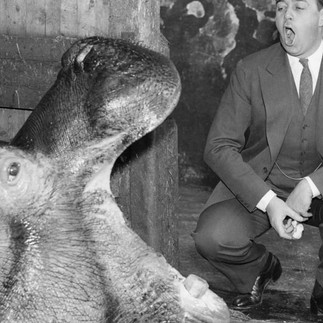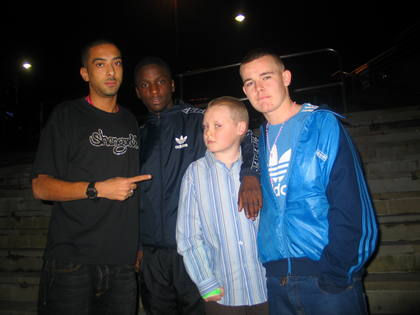Belle Vue Zoo: The Rise and Fall of Manchester’s Legendary Wonderland
- Billy Clements

- Apr 15
- 3 min read

For over 140 years, Belle Vue Zoological Gardens was Manchester’s gateway to the extraordinary. More than just a zoo, it was a thriving epicentre of culture, entertainment, and childhood wonder—a place that conjured magic in the heart of an industrial city. Yet today, only echoes remain, preserved in faded photographs, nostalgic tales, and the memories of those fortunate enough to experience its vibrant heyday.
Origins: From Gardens to Grand Spectacle
In 1836, entrepreneur and visionary John Jennison transformed a modest plot of land in Gorton, East Manchester, into a charming space intended for genteel relaxation. Initially known simply as the Belle Vue Tea Gardens, Jennison’s creation featured manicured gardens, tea rooms, and simple amusements designed to provide respite from the bustling city.
However, Jennison quickly discovered that the Victorian public craved spectacle. Recognising an opportunity, he introduced exotic animals—initially borrowed from travelling menageries—to attract attention. By the end of the decade, Belle Vue was home to a burgeoning zoo collection, including lions, bears, and elephants. This marked a profound shift from modest retreat to dynamic attraction, setting the stage for the venue’s iconic status.

The Golden Age of Belle Vue
As the 19th century advanced, Belle Vue expanded rapidly. By the early 1900s, it had evolved into Britain’s premier leisure complex outside of London. It wasn’t merely a zoo; it was an immersive experience that promised thrilling rides, spectacular shows, grand concerts, and a collection of animals unrivalled in the north of England.
The zoo itself became a source of endless fascination. Notably, Maharajah the elephant captured imaginations in 1872 when, after refusing to travel by rail, he famously marched 200 miles from Edinburgh to Manchester. Maharajah’s epic journey symbolised the remarkable spirit and ambition that Belle Vue embodied.
In addition to animals, Belle Vue dazzled visitors with its amusement park. The legendary “Bobs” roller coaster, opened in 1929, sent riders careening at speeds of over 60 mph, while the Scenic Railway roller coaster offered breath-taking vistas of the sprawling grounds. Spectacular firework displays illuminated the night skies weekly, becoming synonymous with Manchester summers.
Perhaps most impressively, Belle Vue hosted live entertainment of international renown. Its King’s Hall, opened in 1910, was a venue where musical giants like The Beatles, Jimi Hendrix, The Rolling Stones, and Led Zeppelin thrilled packed houses. Wrestling and boxing matches, international circuses, and exhibitions further added to Belle Vue’s formidable reputation.
Animals, Anecdotes, and Legends
Belle Vue’s collection of animals wasn’t merely exotic—it was storied and eccentric. Consul, a chimpanzee famed for his human-like antics, frequently appeared in staged events, dressed in suits and smoking pipes to audiences’ amusement. Big Charlie, a towering giraffe, and numerous other exotic animals, each had their own compelling narrative, reflecting the fascination and occasionally questionable ethics of Victorian and Edwardian zoology.
Yet Belle Vue was also progressive, implementing education programmes long before they were commonplace, aiming to foster respect and curiosity about wildlife. Its aquarium and reptile house were celebrated for their educational value, and their commitment to zoological innovation placed Belle Vue among Europe’s most respected zoos.
The Decline: End of an Era
Despite its decades of success, Belle Vue began to falter after World War II. Changing public tastes, coupled with escalating operational costs and competition from newer forms of entertainment, slowly eroded attendance. By the 1970s, the once-mighty institution was financially unstable.
In 1977, the inevitable happened: Belle Vue Zoo closed its gates for the final time. Three years later, in 1980, the amusement park followed suit. The demolition of the iconic Bobs roller coaster in 1971 had been symbolic of Belle Vue’s accelerating decline. By the late 1980s, virtually all of Belle Vue had vanished—only a greyhound stadium, which eventually also closed in 2020, remained.
Preserving Belle Vue’s Legacy
Though physically gone, Belle Vue remains vividly alive in collective memory. For many Mancunians, it represents cherished childhood experiences, a repository of nostalgia, and a symbol of a city whose spirit of innovation and enterprise defined the Victorian and Edwardian eras.
Local historians, community groups, and enthusiasts continue to preserve Belle Vue’s legacy through exhibitions, archival collections, and community projects. Sites such as the Belle Vue Memorial and community-driven initiatives strive to commemorate its cultural impact.
Reflection: Why Belle Vue Matters
Belle Vue’s enduring importance lies in its ability to encapsulate Manchester’s transformation from an industrial powerhouse into a city of leisure and entertainment. It was more than a destination; it was a cultural phenomenon reflecting broader historical trends—from Victorian entrepreneurialism to post-war leisure patterns.
Today, Belle Vue reminds us of a time when imagination and ambition collided spectacularly, creating a place unlike anything Manchester had seen before or since. Though the gardens are gone, their echoes linger, woven into the city’s fabric, proving that while Belle Vue may have disappeared, its spirit remains eternal.
In Manchester, memories run deep—and in them, Belle Vue lives forever.









Comments